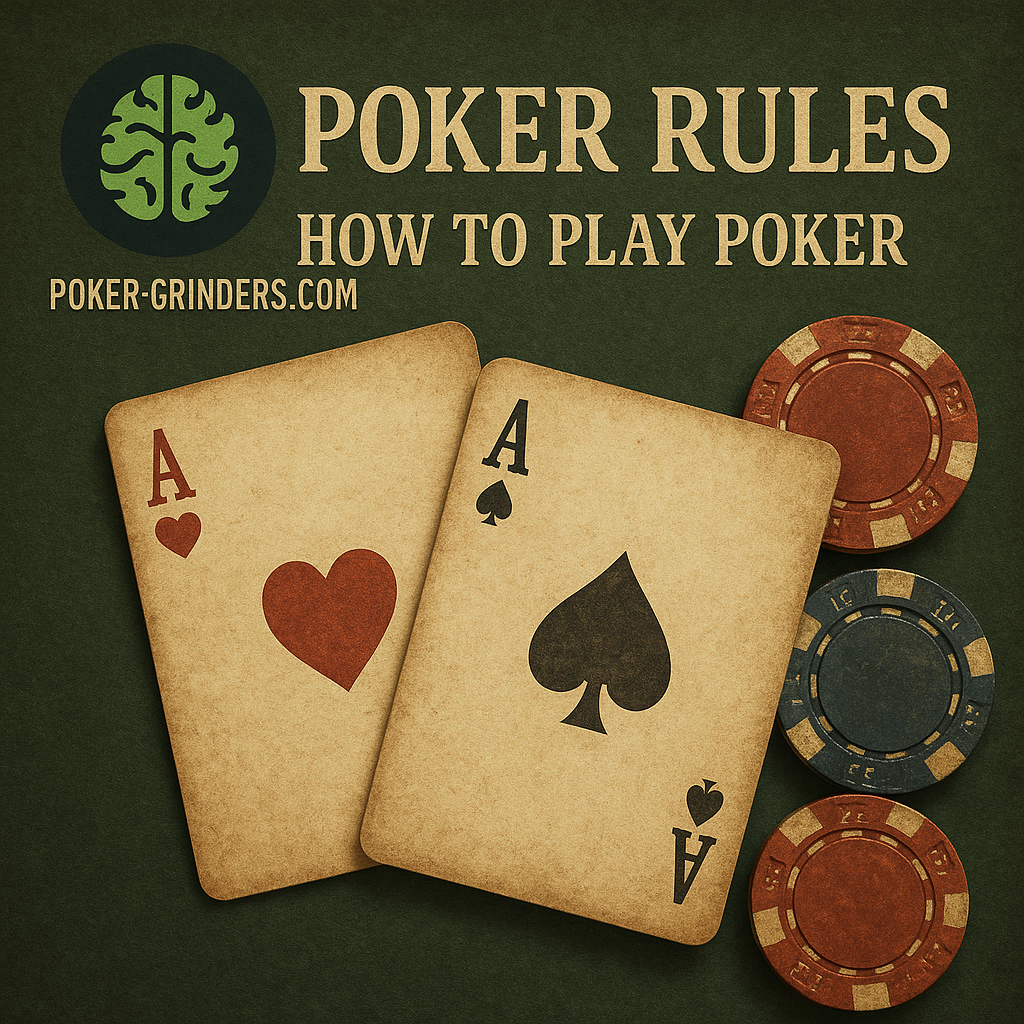The rules of poker are fairly straightforward. But learning how to play the game well—that’s a whole different story. Only the most dedicated players manage to achieve consistent long-term profits. In this article, though, we’ll focus on that first part. We’ll break down the essential basics, go over the winning poker hands, and share two quick tips that can instantly improve your game.

Poker Rules – Basics of Poker Texas Hold’em
The most popular poker variant, Texas Hold’em, is played with two hole cards and five community cards on the table. You’re first dealt two cards, followed by the initial round of betting. Then come the first three community cards—this is called the flop. Another betting round follows, and then the fourth community card is dealt—the turn. The final card is called the river.
On each post-flop street, you can choose from several actions: check (if no one has bet before you), bet or raise, or fold if there’s been a bet and you don’t want to continue. If the hand reaches the river and the final betting round is complete, players reveal their cards in the showdown. The pot goes to the player with the best five-card poker hand.
Poker Hands – What Beats What in Poker
Poker hand rankings are the same across all types and variants of the game. Some formats may differ in how hands are evaluated or ranked, but the poker terminology for each hand stays consistent. Below is a list of all standard poker hands, ranked from weakest to strongest based on the most commonly used hierarchy.
High Card – the highest single card, ranging from 2 to Ace.
One Pair – two cards of the same rank. These can be both in your hand, one in your hand and one on the board, or both on the board (in which case the pair is shared by all players).
Two Pair – the same principle as one pair, but with two different pairs.
Three of a Kind – three cards of the same rank.
Straight – five cards in sequential order, regardless of suit.
Flush – five cards of the same suit (spades, hearts, clubs, or diamonds).
Full House – a combination of three of a kind and a pair.
Four of a Kind (Quads) – four cards of the same rank.
Straight Flush – five cards in sequence, all of the same suit.
Royal Flush – the highest possible straight flush: A, K, Q, J, 10, all in the same suit.
Poker Position and Open Ranges – How to Win at Poker
If you’re looking to take poker even somewhat seriously, understanding position and open ranges is absolutely crucial. It’s the first step toward thinking about poker as a strategic and deeply nuanced game. The main positions at the table are: early position, middle position, cutoff, button, small blind, and big blind.
We play a different range of hands depending on our position at the table. The key idea is that from early position, many players are still left to act after us, so we should only enter the pot with strong hands. On the other hand, we can play a much wider range from the button, since only the small blind and big blind are left to act. What’s more, we’ll have positional advantage post-flop—meaning we’ll act last in every betting round, giving us access to the most information. We’ll dive deeper into this crucial concept in future articles.
Below is an example of an opening range for a micro stakes 6-max cash game.

1️⃣ How to Play Poker
Poker is played with a standard 52-card deck and poker chips. Players compete by forming the best hand combinations and betting on who holds the strongest hand. You can win either by having the best hand at showdown or by getting your opponents to fold to your bet.
2️⃣ How to Play Texas Hold’em Poker
In Texas Hold’em, each player is dealt two hole cards. Five community cards are then revealed on the board in stages: first the flop (3 cards), followed by the turn and the river (1 card each). Players can bet before and after each stage, competing for the central pot.
3️⃣ How to Play 3 Card Poker
Three Card Poker is a simplified version of traditional poker, often compared to Texas Hold’em. Some versions include special rules or twists, especially in home games where players may customize the format.
